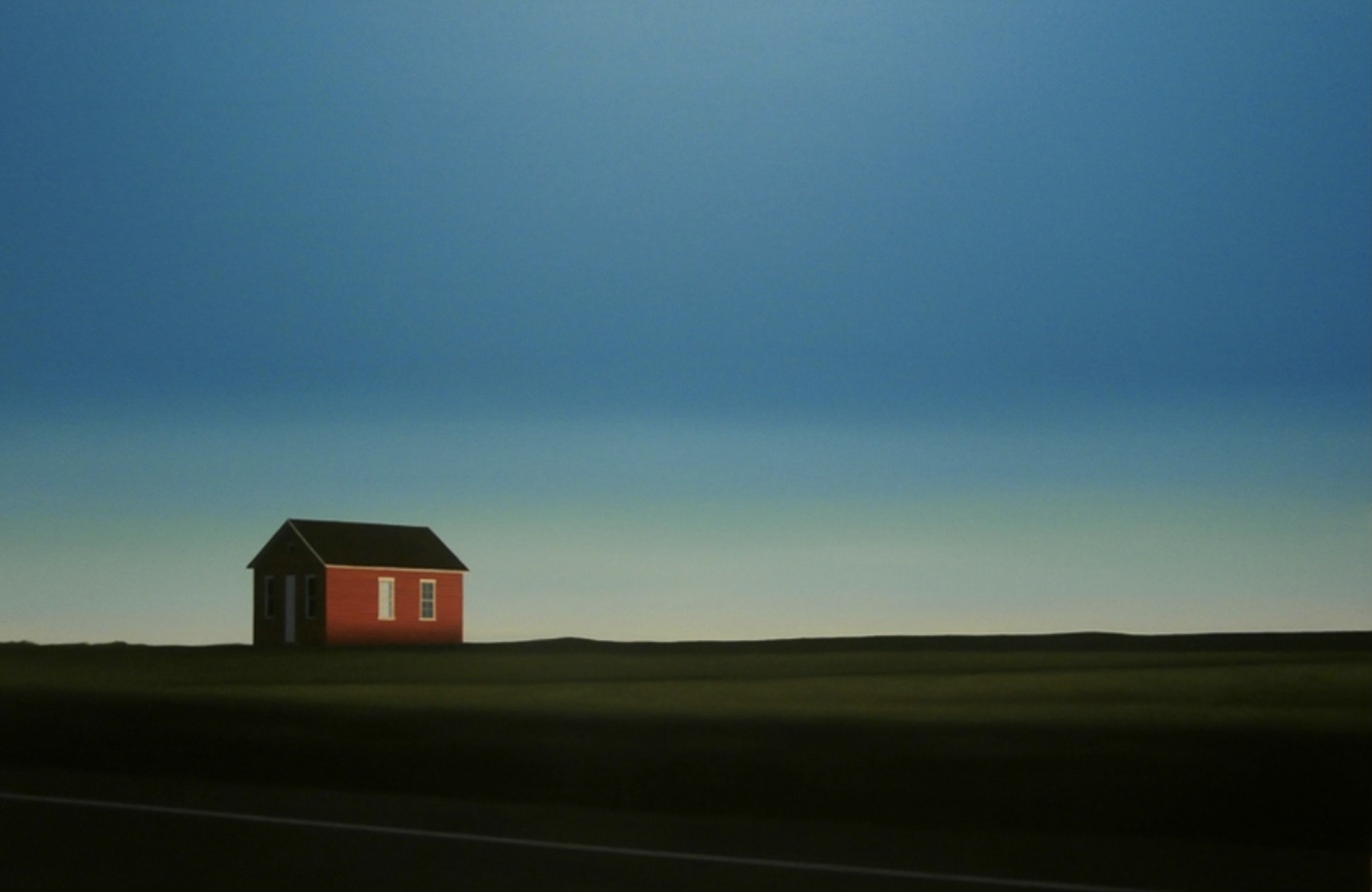
Oil on canvas
Hook Road is part of a series that, despite its profound aura of isolation, is unified by a common theme of small, geometric houses in lonely fields or at the precarious lips of empty roads. In other words—and not disparaging ones, make no mistake—they all kind of look the same.
Nevertheless, there’s a reason Hook Road stands out. The difference is as small as a change in angle, but it’s the angle that makes all the difference. Most other house-portraits in Dixon’s landscapes are head-on, giving their subjects a figment-of-the-imagination quality. Someone asks you to think of a house; Pennington is the house you think of. But the subject of Hook Road stands at a defiant diagonal. It is not a house imagined; it is not a house half-remembered, as if from a sorrowful dream; it is a house approached, then bypassed, then forgotten in a matter of hours. It is the view out the window on an eight-hour road trip. What is such a house doing out here? Does anyone live in it? Did anyone ever?
And why here? What could someone be chasing—what could be chasing them—that would bring them here, to a place that doesn’t even exist without a traveler to observe it?
⋅•⋅⊰∙∘☽༓☾∘∙⊱⋅•⋅